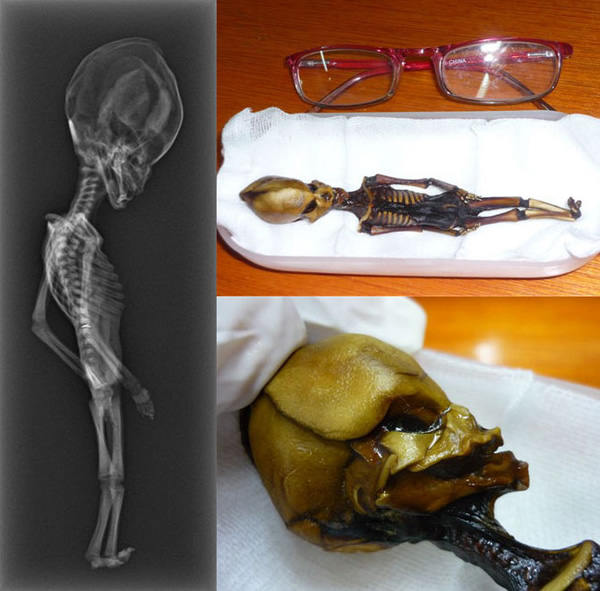
Photo: Garry Nolan
When immunologist Garry Nolan of Stanford University heard about the skeleton, since named the "Atacama humanoid" or "Ata" for short, he decided to lend his scientific expertise to find out what exactly is the mysterious being:
Among the apparent abnormalities, Ata sports 10 ribs instead of the usual 12 and a severely misshapen skull. "I asked our neonatal care unit how you would go about analyzing it. Had they seen this kind of syndrome before?" Nolan says. He was directed to pediatric radiologist Ralph Lachman, co-director of the International Skeletal Dysplasia Registry at Cedars-Sinai Medical Center in Los Angeles, California. "He literally wrote the book on pediatric bone disorders," Nolan says. Lachman was blown away, Nolan recalls: "He said, 'Wow, this is like nothing I've ever seen before.' "Find out what the researchers concluded about the mysterious Ata, over at this post by Richard Stone of Science: Here.
To study the specimen, Nolan sought clues in Ata's genome. He initially presumed the specimen was tens or hundreds of thousands of years old—the Atacama Desert may be the driest spot on the planet, so Ata could have been preserved for eons. He consulted experts who had extracted DNA from bones of the Denisovans, an Asian relative of European Stone Age Neandertals.

No comments:
Post a Comment